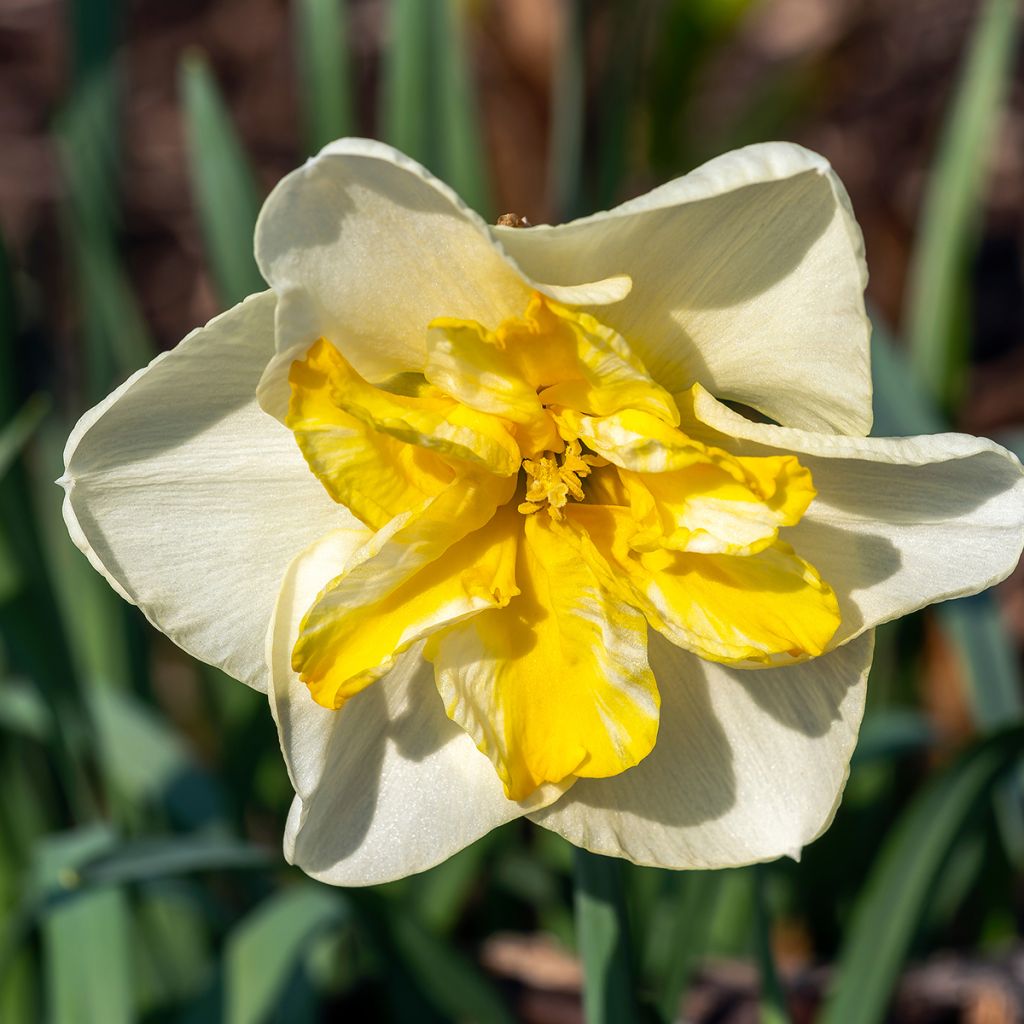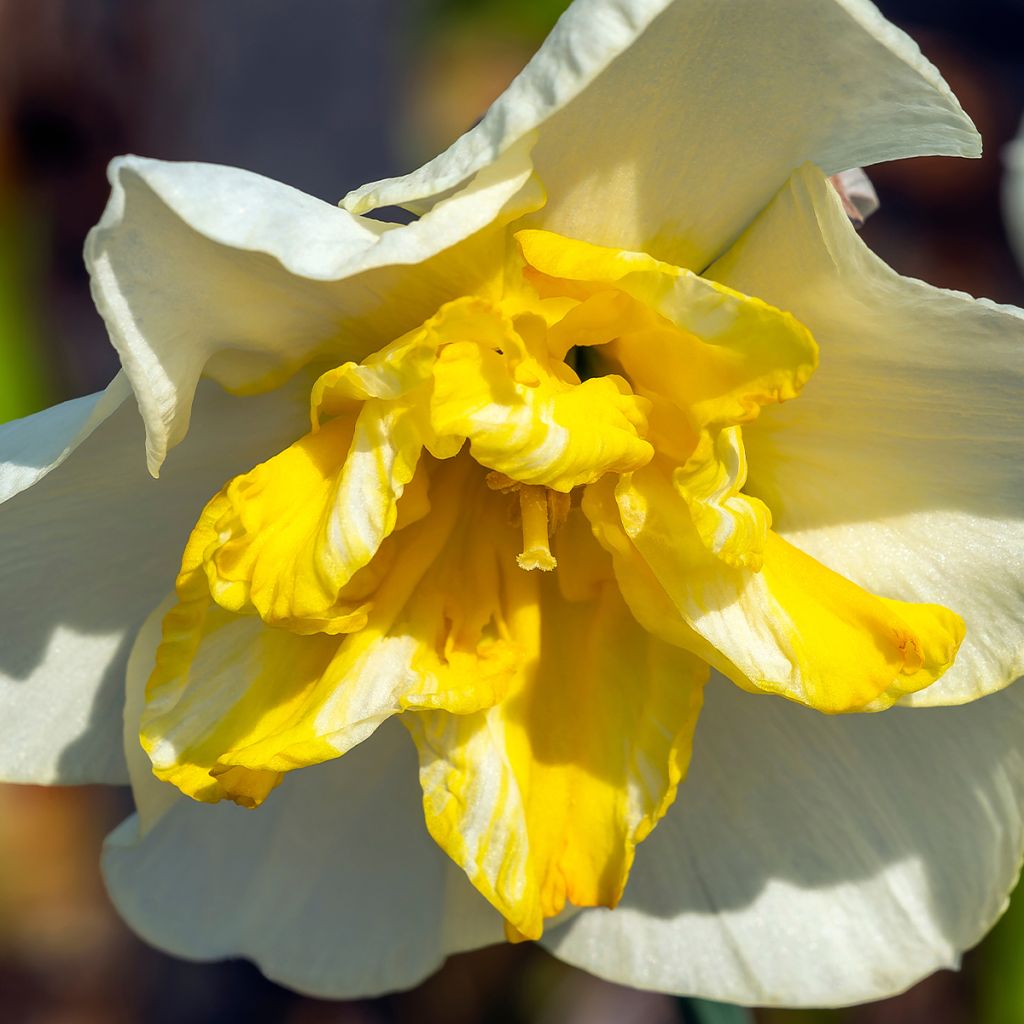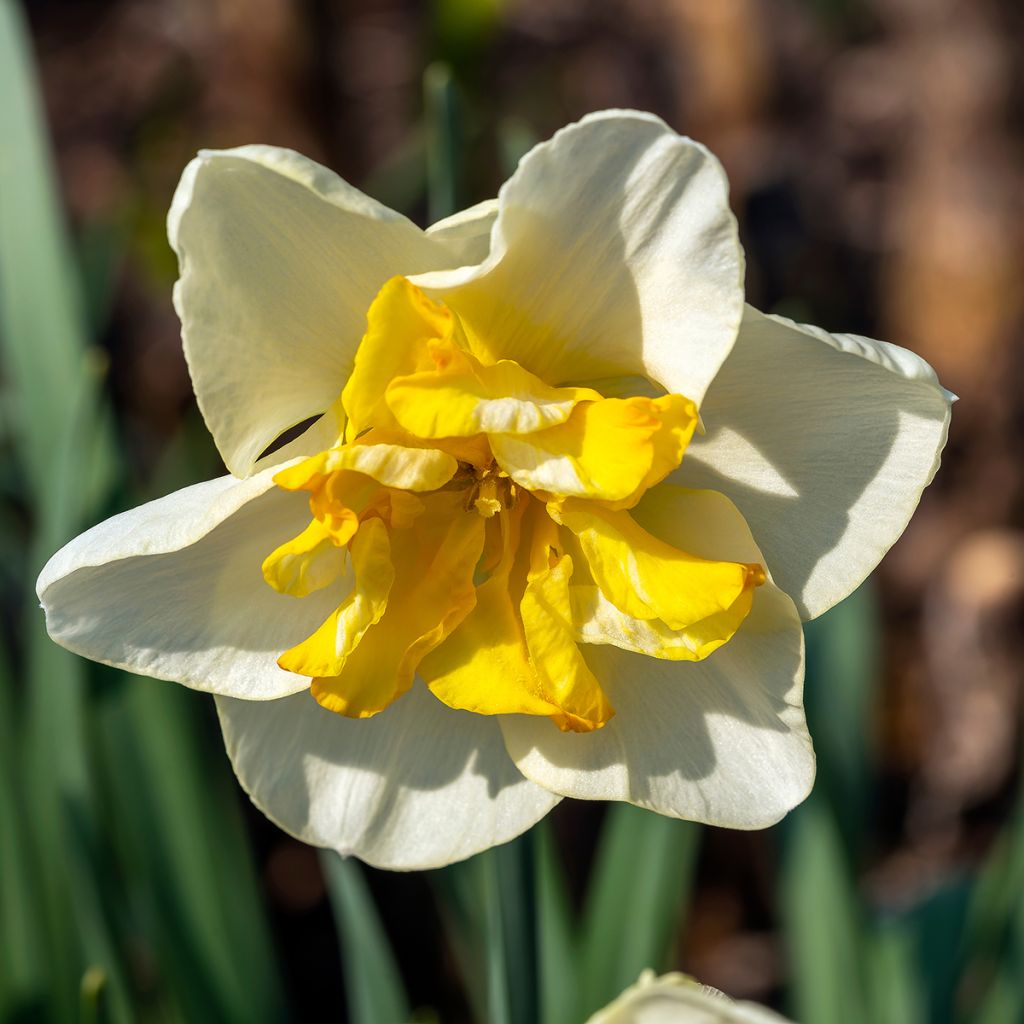

Narcisse Lemon Beauty


Narcisse Lemon Beauty


Narcisse Lemon Beauty


Narcisse Lemon Beauty


Narcisse Lemon Beauty
Narcissus 'Lemon Beauty'
Narcissus Lemon Beauty
Daffodil, Narcissus, Jonquil
very beautiful; I never tire of them
Valérie Giraudeau, 03/10/2016
This plant carries a 6 months recovery warranty
More information
We guarantee the quality of our plants for a full growing cycle, and will replace at our expense any plant that fails to recover under normal climatic and planting conditions.
From €5.90 for pickup delivery and €6.90 for home delivery
Express home delivery from €8.90.


Does this plant fit my garden?
Set up your Plantfit profile →
Description
The Daffodil or Narcissus 'Lemon Beauty' is a variety with delicate lines and sparkling colours that sometimes won't bloom until May. Its solitary, large flower displays a semi-double corolla of bright white adorned with a star-shaped lemon yellow crown, curiously spread out in the shape of a butterfly. Awarded by the Royal Horticultural Society in England, this variety is a reliable value in the garden and an excellent cut flower. It settles quietly in the garden and naturalizes easily in light soil.
Narcissus 'Lemon Beauty', introduced in the Netherlands in 1962, belongs to the family of lilies (Amaryllidaceae), more precisely to division 11 of the large Narcissus family, which has 12 divisions. The genus Narcissus includes about 50 species mainly found in the western Mediterranean, but also in Africa and Asia. The 'Lemon Beauty' daffodil is vigorous and prolific. It reaches about 30cm (12in) in height for the foliage, 40cm (16in) when in bloom. Its flowers are remarkably architectural and particularly wide, measuring up to 10cm (4in) in diameter. They consist of a semi-double corolla of pure white petals, slightly and gracefully fringed at the edges, onto which a large flat and split crown is inserted, divided into several petal-like segments. The segments of the crown are marked by a remarkably vivid lemon yellow midline. It is a plant that blooms rather late, in April-May, with yellow-green flower buds that give way to beautiful non-fragrant flowers. Split-crown daffodils have a crown of petals split on at least one third of their length, with the edge rolled towards the petals, slightly fringed. The foliage is deciduous, linear and disappears in summer. This variety easily multiplies by producing bulblets.
Not demanding, the 'Lemon Beauty' split-crown daffodil grows in any well-drained and loosened soil, but the results are less good in excessively wet or acidic soils. There is such a choice of varieties among daffodils that you can enjoy them for three months in spring without ever getting tired. They all have in common the ability to naturalize easily, a love for yellow and white, and often emit sweet fragrances. So many reasons to grow them in large clumps (at least 20 bulbs) for a multiplied effect. Associate the 'Lemon Beauty' daffodil, in natural-looking flower beds, with squills and hyacinths, accompany it with early tulips but also with forget-me-nots, pansies or liverworts. A group of 'Lemon Beauty' daffodils in a vase creates a sensational effect. In pots, this daffodil is also perfect.
For bouquets: We advise you not to mix Daffodils with other flowers. Tulips in particular, as the stems of Daffodils contain a substance that quickly wilts other flowers. You can mitigate this detrimental effect on other types of flowers by dipping the ends of the Daffodil stems in hot water for 1 to 2 minutes.
Report an error about the product description
Narcissus 'Lemon Beauty' in pictures


Plant habit
Flowering
Foliage
Botanical data
Narcissus
Lemon Beauty
Amaryllidaceae
Daffodil, Narcissus, Jonquil
Cultivar or hybrid
Planting and care
Narcissi bloom from March to May and come back every year. Very easy to grow, they can thrive in both the shade of the woods and a sunny flower bed. Plant them 10cm (4in) deep and 10cm (4in) apart. Group them in sets of at least 5 bulbs, in uniform color patches or mixed. You can also plant them in the short grass meadow. In this case, remove the grass sod, dig and loosen the soil to a depth of at least 20cm (8in) (the height of a spade). Plant your bulbs, cover with soil, and replace the grass sod. Choose a spot where you won't mow, as it is necessary to let the narcissus leaves wither before cutting them. This is when the bulb regenerates and prepares the flowers for the following year. However, remember to cut the flowers as soon as they fade to prevent seed formation. This would unnecessarily exhaust the bulb. Please note that the translation provided above is a direct translation and may not be stylistically appropriate. Let's review it to ensure accuracy and correct any potential errors. Narcissi bloom from March to May and return each year. They are very easy to cultivate and can thrive in both the shade of a woodland and a sunny flower bed. Plant them at a depth of 10cm (4in) and spaced 10cm (4in) apart. Group them in sets of at least 5 bulbs, in uniform colour patches or mixed. You can also plant them in a short grass meadow. In this case, lift the grass turf, dig and loosen the soil to a depth of at least 20cm (8in) (the height of a spade). Plant your bulbs, cover with soil, and replace the grass turf. Choose a location where you won't be mowing, as it is necessary to allow the narcissus leaves to wither before cutting them. This is when the bulb regenerates and prepares the flowers for the following year. However, remember to cut the flowers as soon as they have faded to prevent seed formation. This would unnecessarily deplete the bulb.
Planting period
Intended location
Care
-
, onOrder confirmed
Reply from on Promesse de fleurs
Haven't found what you were looking for?
Hardiness is the lowest winter temperature a plant can endure without suffering serious damage or even dying. However, hardiness is affected by location (a sheltered area, such as a patio), protection (winter cover) and soil type (hardiness is improved by well-drained soil).

Photo Sharing Terms & Conditions
In order to encourage gardeners to interact and share their experiences, Promesse de fleurs offers various media enabling content to be uploaded onto its Site - in particular via the ‘Photo sharing’ module.
The User agrees to refrain from:
- Posting any content that is illegal, prejudicial, insulting, racist, inciteful to hatred, revisionist, contrary to public decency, that infringes on privacy or on the privacy rights of third parties, in particular the publicity rights of persons and goods, intellectual property rights, or the right to privacy.
- Submitting content on behalf of a third party;
- Impersonate the identity of a third party and/or publish any personal information about a third party;
In general, the User undertakes to refrain from any unethical behaviour.
All Content (in particular text, comments, files, images, photos, videos, creative works, etc.), which may be subject to property or intellectual property rights, image or other private rights, shall remain the property of the User, subject to the limited rights granted by the terms of the licence granted by Promesse de fleurs as stated below. Users are at liberty to publish or not to publish such Content on the Site, notably via the ‘Photo Sharing’ facility, and accept that this Content shall be made public and freely accessible, notably on the Internet.
Users further acknowledge, undertake to have ,and guarantee that they hold all necessary rights and permissions to publish such material on the Site, in particular with regard to the legislation in force pertaining to any privacy, property, intellectual property, image, or contractual rights, or rights of any other nature. By publishing such Content on the Site, Users acknowledge accepting full liability as publishers of the Content within the meaning of the law, and grant Promesse de fleurs, free of charge, an inclusive, worldwide licence for the said Content for the entire duration of its publication, including all reproduction, representation, up/downloading, displaying, performing, transmission, and storage rights.
Users also grant permission for their name to be linked to the Content and accept that this link may not always be made available.
By engaging in posting material, Users consent to their Content becoming automatically accessible on the Internet, in particular on other sites and/or blogs and/or web pages of the Promesse de fleurs site, including in particular social pages and the Promesse de fleurs catalogue.
Users may secure the removal of entrusted content free of charge by issuing a simple request via our contact form.
The flowering period indicated on our website applies to countries and regions located in USDA zone 8 (France, the United Kingdom, Ireland, the Netherlands, etc.)
It will vary according to where you live:
- In zones 9 to 10 (Italy, Spain, Greece, etc.), flowering will occur about 2 to 4 weeks earlier.
- In zones 6 to 7 (Germany, Poland, Slovenia, and lower mountainous regions), flowering will be delayed by 2 to 3 weeks.
- In zone 5 (Central Europe, Scandinavia), blooming will be delayed by 3 to 5 weeks.
In temperate climates, pruning of spring-flowering shrubs (forsythia, spireas, etc.) should be done just after flowering.
Pruning of summer-flowering shrubs (Indian Lilac, Perovskia, etc.) can be done in winter or spring.
In cold regions as well as with frost-sensitive plants, avoid pruning too early when severe frosts may still occur.
The planting period indicated on our website applies to countries and regions located in USDA zone 8 (France, United Kingdom, Ireland, Netherlands).
It will vary according to where you live:
- In Mediterranean zones (Marseille, Madrid, Milan, etc.), autumn and winter are the best planting periods.
- In continental zones (Strasbourg, Munich, Vienna, etc.), delay planting by 2 to 3 weeks in spring and bring it forward by 2 to 4 weeks in autumn.
- In mountainous regions (the Alps, Pyrenees, Carpathians, etc.), it is best to plant in late spring (May-June) or late summer (August-September).
The harvesting period indicated on our website applies to countries and regions in USDA zone 8 (France, England, Ireland, the Netherlands).
In colder areas (Scandinavia, Poland, Austria...) fruit and vegetable harvests are likely to be delayed by 3-4 weeks.
In warmer areas (Italy, Spain, Greece, etc.), harvesting will probably take place earlier, depending on weather conditions.
The sowing periods indicated on our website apply to countries and regions within USDA Zone 8 (France, UK, Ireland, Netherlands).
In colder areas (Scandinavia, Poland, Austria...), delay any outdoor sowing by 3-4 weeks, or sow under glass.
In warmer climes (Italy, Spain, Greece, etc.), bring outdoor sowing forward by a few weeks.


































